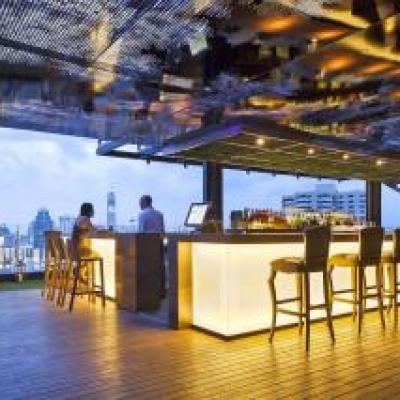More from soho hospitality
More in Politics
Related Blogs
Les archives
Partage Social
How do hotels and restaurants in Thailand craft unique interior experiences?
Posté par soho hospitality
Corps
Hotels and restaurants in Thailand have long been celebrated for their sumptuous cuisine as well as for their captivating interior designs.
The food is not enough to create the entire dining and hospitality experience. In this blog, we'll explore how Thailand Interior Designers are crafting unique experiences in hotels and restaurants. Let’s find out how showcasing your rich culture can encourage the guests to keep coming back.

- Embracing Thai Cultural Heritage:
The interior design bar restaurant or a restaurant should reflect the country's cultural heritage. Traditional Thai architecture and artistry are seamlessly integrated into modern spaces. For instance, The Sala Rattanakosin restaurant in Bangkok offers a breathtaking view of the Wat Pho temple and the Chao Phraya River. Its interior design beautifully marries contemporary chic with Thai cultural elements, featuring rich wooden accents, silk furnishings, and intricately carved wooden screens. This fusion creates an immersive dining experience, allowing guests to savor Thai cuisine while surrounded by the country's cultural essence.
- Balancing Tradition with Modernity:
Thailand's hotels and restaurants skillfully blend traditional aesthetics with modern design elements. This balance creates a unique ambiance that appeals to both local and international guests. The interior designer of a popular Michelin-starred Thai cuisine establishment, suggests preserving traditional elements like hand-painted ceramic tiles and antique Thai pottery. Incorporating these with contemporary touches of sleek wooden furniture and modern lighting fixtures is the trick. This harmonious blend offers a fresh take on Thai dining while paying homage to its roots.
- The Art of lighting in the restaurant and bar interior design
Lighting plays a pivotal role in crafting unique interior experiences. Thai hotels and restaurants often use lighting to set the mood and enhance the overall dining ambiance. For instance, restaurants feature a lush garden setting, with trees and foliage incorporated into the design. When night falls, a canopy of warm fairy lights and strategically placed lanterns bathes the space in a romantic glow and creates a magical atmosphere for diners.
- Sustainability and Local Materials:
Sustainability is a growing trend in Thai interior design, with an emphasis on using locally sourced and eco-friendly materials. For instance, the lavish tree pool houses in resorts are made of reclaimed wood and bamboo, while furniture and decor are crafted from natural materials. This commitment to sustainable design not only reduces the resort's carbon footprint but also adds to its distinctive charm.
- The Magic of Thai Textiles:
Thai textiles, renowned for their intricate designs and vibrant colors, often take center stage in hotel and restaurant interiors. For instance, top hotels where Thai textiles adorn the walls, ceilings, and even the staff uniforms. This use of textiles adds a bold and lively dimension to the restaurant's modern design, creating a visual feast for diners.
Conclusion
Thailand's hotels and restaurants have mastered the art of crafting unique interior experiences. If you wish the same, then get a quote from Soho Hospitality. Rated as the #1 hotel interior designer, they are helping upscale establishments to create unforgettable hospitality experiences.









commentaires